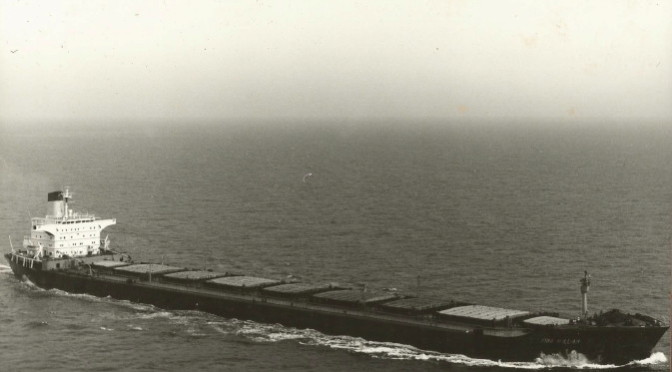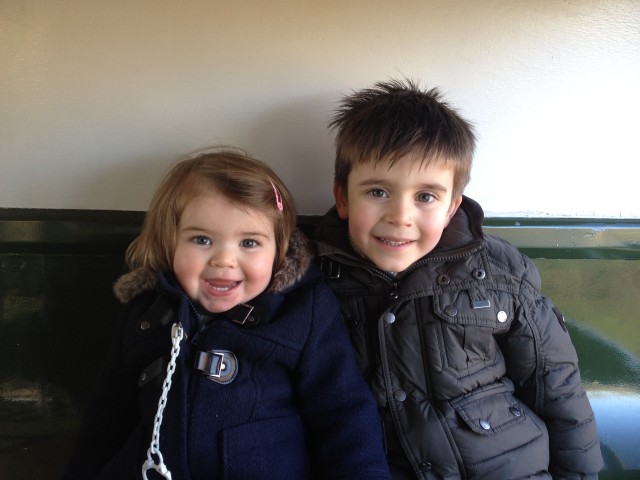As expected, once we rounded North Cape, the northernmost point of New Zealand, the first hint of the swell I was expecting began to materialise. By 9 p.m. we were pitching quite heavily at times in a long, steep south-west swell. Having anticipated such an occurrence, I had instructed the personnel on board to secure to code Red, our modern-day equivalent of “batten down the hatches”. Everything that could move was secured, (all of our interior fixtures are permanently secured), so this related to objects such as carts, trolleys, stores, etc.
On our Sunday morning, there was an almost imperceptible improvement, it is very slowly subsiding and the further west we went, the better it became We are in the Tasman Sea and it is notorious for its weather, fickle creature that she is. The prognosis though, apart from the swell, is good for our voyage to Sydney.
We of course, are blessed with stabilisers; they stop, or reduce our rolling. In my earlier days at sea, the ships on which I served, (most of them at least), had no such luxury. Many were the times when one would have to put a life jacket under the mattress, ‘wedging’ you up against the adjacent bulkhead and thus preventing you rolling out.
I think my worst experience was on a bulk-carrier in the 70’s. Having loaded approximately 90,000 tonnes of iron ore in Australia, we headed for Rotterdam. This entailed taking a great-circle route from Australia to a landfall off Cape Agulhus, on the coast of South Africa and then northwards towards Europe.
Our Great-Circle route took us down into the ‘Roaring Forties’, so named because of its latitudes and it is one of the world’s weather machines and is constantly stormy. We rolled permanently; it gradually wore one down until one reached the point of utter wretchedness and frustration, begging for it to stop, even for a minute. On and on, for almost 2 weeks, until we moved out of it nearer South Africa. The Bulker was also deeply laden and it was quite common to be more akin to a submersible; waves breaking over and along the deck so that all one could see was the bow, while the deck between the Bridge was awash with water.
In the 70’s several such bulk-carriers disappeared without trace. Had these iron-ore carriers been a class of passenger aircraft, they would have been grounded until the design fault, or reason, had been found. Not so with these ships, what were the lives of a mere 33 men in a far remote corner of the globe? It was only after intensive lobbying, the loss of a massive British vessel, the “Derbyshire”, and several close ‘shaves’, such as ships breaking their backs, (their keel snapping), but not sinking, that the reason was found; insufficient strengthening, the sheer weight of ore being poured into their cargo holds and the massive ‘grabs’ which discharged the cargo, weakening the bottom plates.
All this was going on while I was on my bulk-carrier and I was always mindful of it (and very apprehensive too).
It was the only ship I have been on that I was apprehensive about sailing. I used to do the 12-4 watch, midday until 4 p.m. and midnight to 4 a.m. I came on watch at midnight, during a particularly bad storm. Once my eyes had become accustomed to the darkness, I realised that half the officers were on the bridge, very unusual; by this time, I could see the deck ahead of me, I use the term loosely, where the deck should have been was wall after wall of water rolling over the hatches, it was a long night, I can tell you.
One’s sanity became ‘questionable’ on such ships. Loading took place in the blazing heat of north Australia. Berthed on a 2-mile long conveyor belt, pouring ore in at 100’s of tonnes an hour, one never got ashore. Similarly, discharging the ore took place in Japanese steel works, so one never got ashore there either. Our Captain had previously commanded one of our passenger liners. On these, one changed from ’Tropical’ white uniform to ‘Winter’ blue uniform dependent on the sea temperature. He brought this habit to the ore-carrier. We changed uniform more often than our underwear and matters came to a head.
Our 2nd Engineer, having become disillusioned with so many changes, took it upon himself to make his own uniform. He cut his blue winter uniform in half; ½ a jacket and ½ a pair of trousers. He similarly did it with his tropical white uniform; ½ a white shirt and ½ white shorts.
He then sewed it together, his ‘top’ consisted of the blue, long-sleeved jacket and the half white shirt, his trousers were 1 leg of long blue trousers and 1 leg white shorts. To complement it all, he had 1 white long sock, and 1 black and 1 white shoe.
He walked into the officers bar one evening, dressed in this garb, carrying a suitcase. The captain was sitting on a bar stool at the time. “Captain, what, pray tell, is the bloody rig of the day”? He asked.
The Captain, completely taken by surprise, stared aghast at the sight and promptly fell off his bar stool. Everyone collapsed with laughter and, more to the point; the Captain changed his habit of changing uniform on the sea temperature. Such is a seaman’s sense of humour…..
Today, the 9th, we are 1 day out from Sydney and the seas are calm again, the sun is trying to break through after some early showers and all is right with the world. Tomorrow morning we enter Sydney harbour and with it comes the opportunity for some photos. My blog has been somewhat different today, a change from the usual photos and commentary, nevertheless, I hope you enjoy this departure from the norm.


